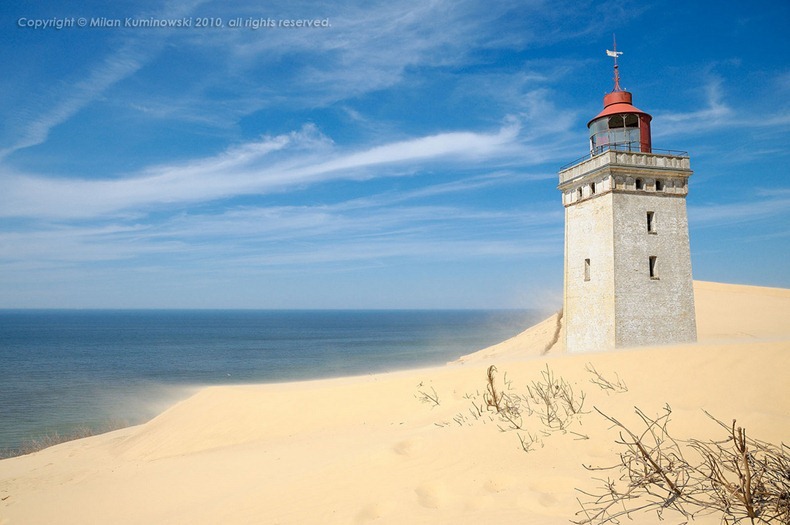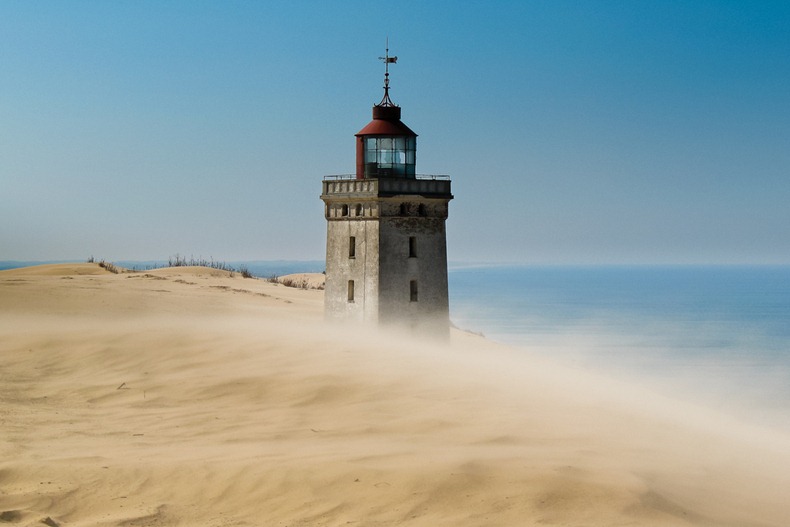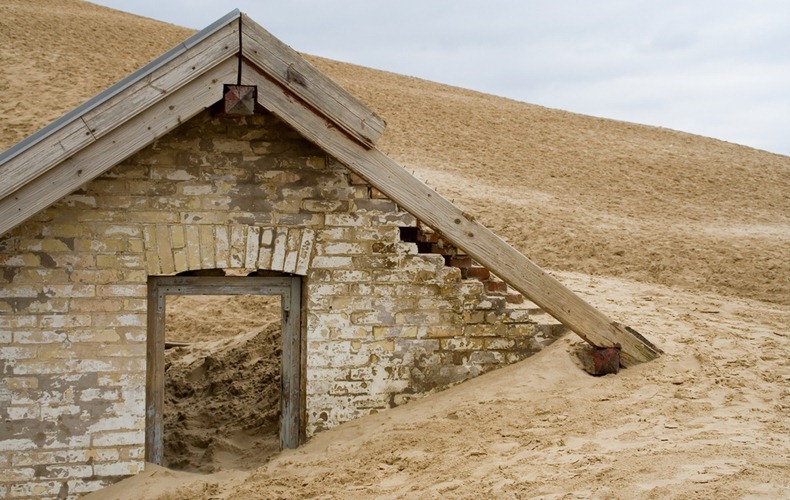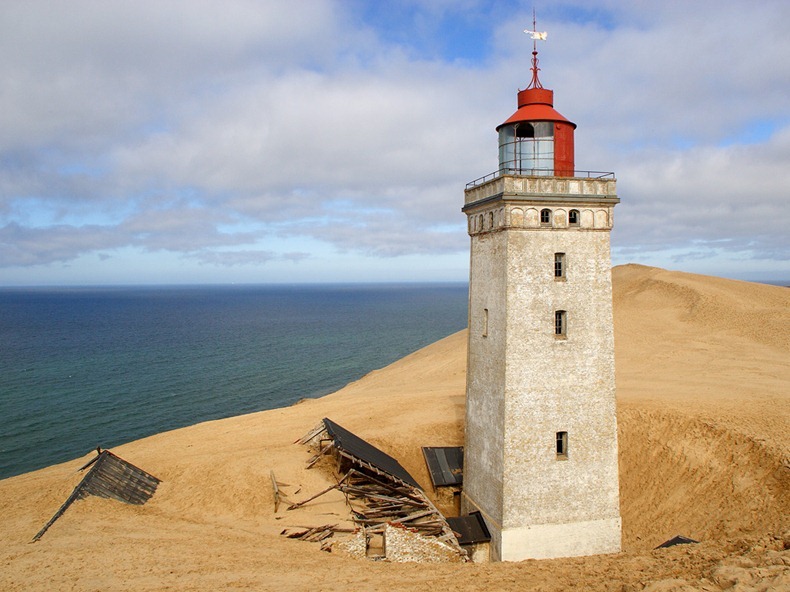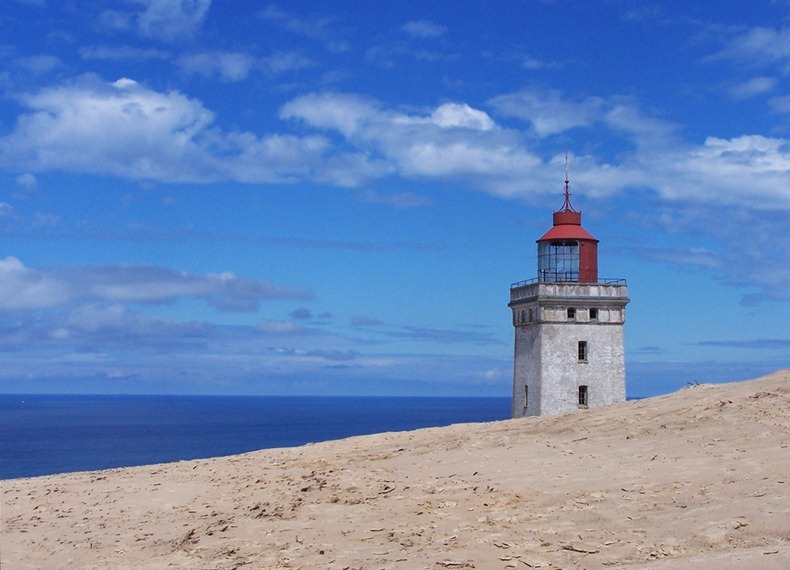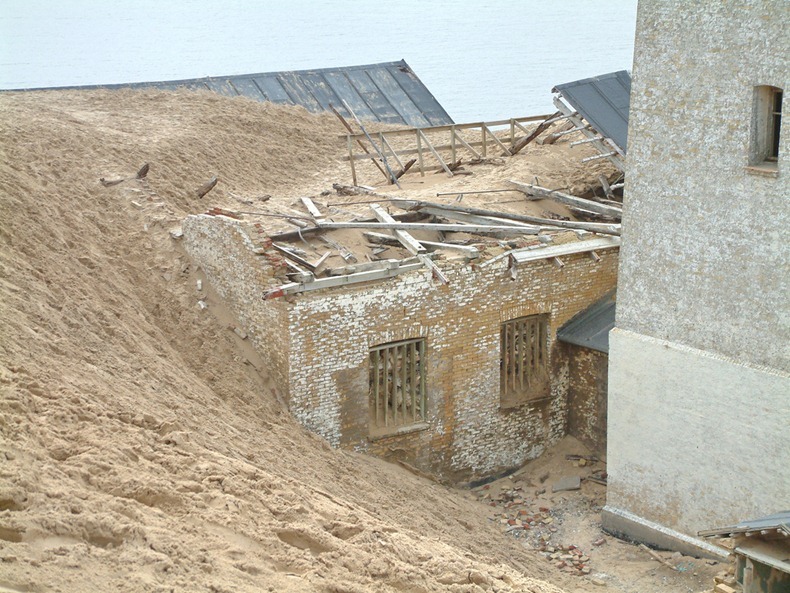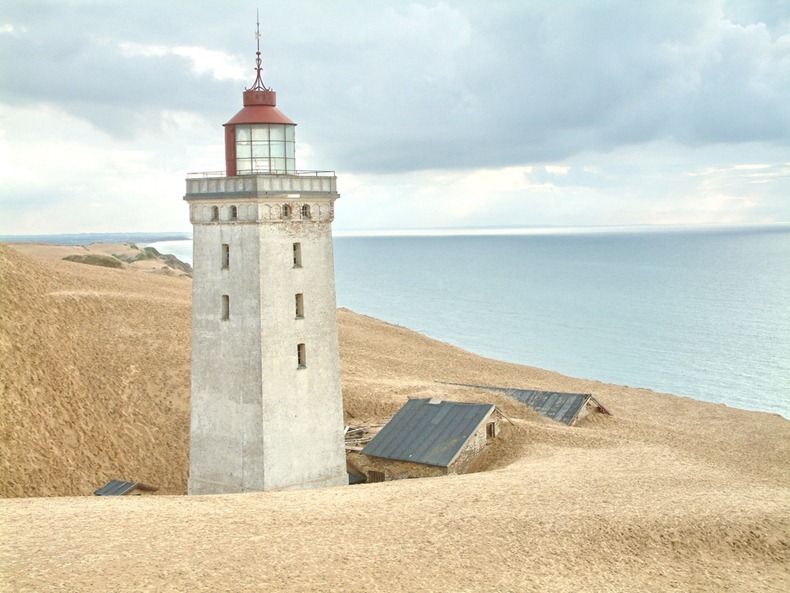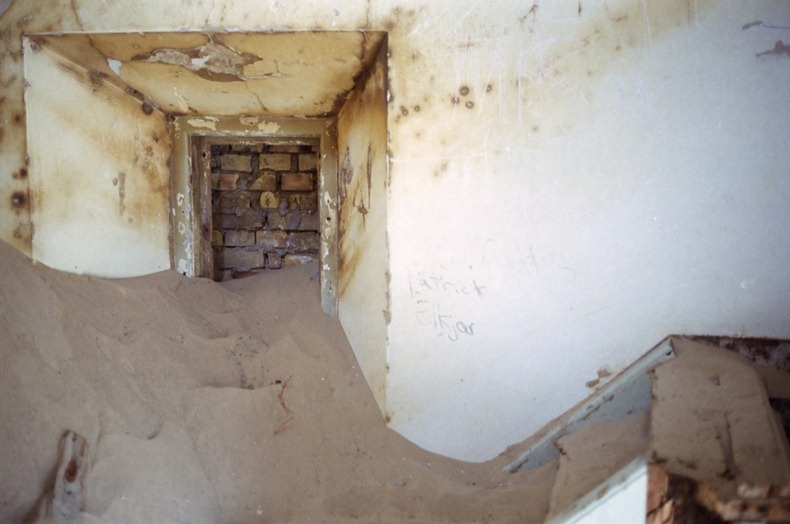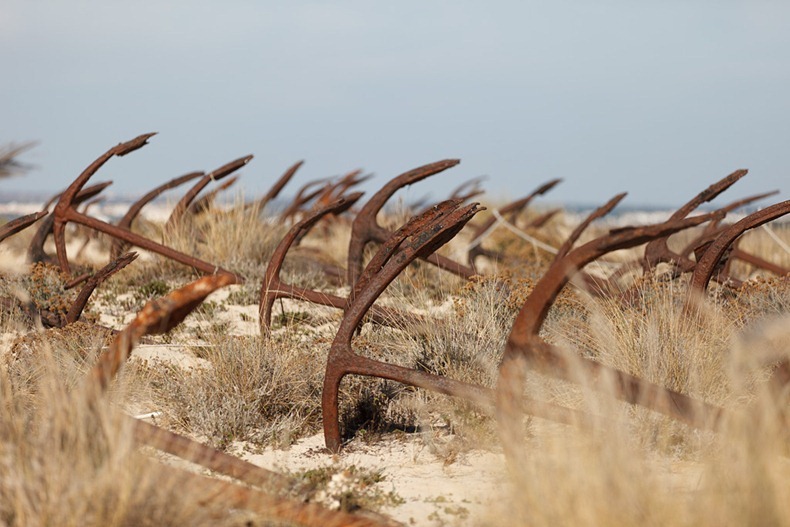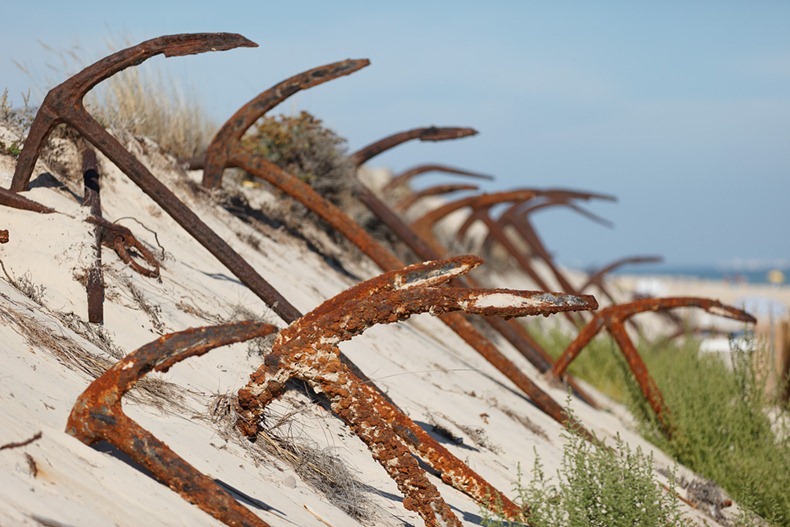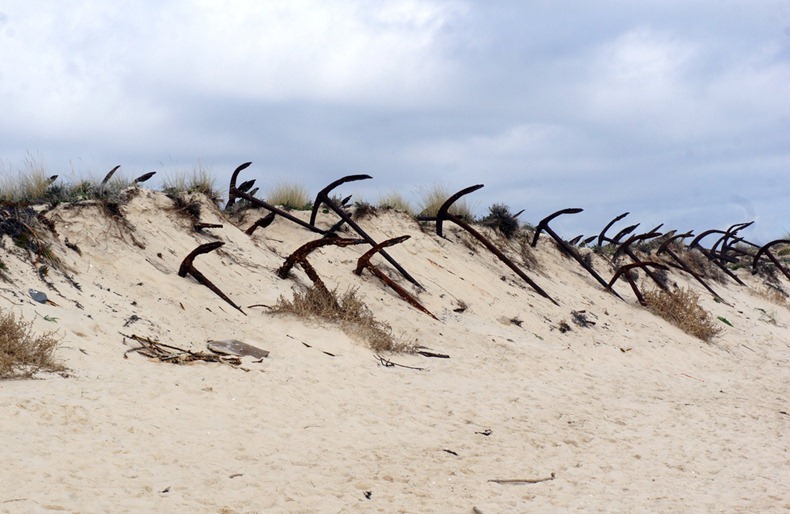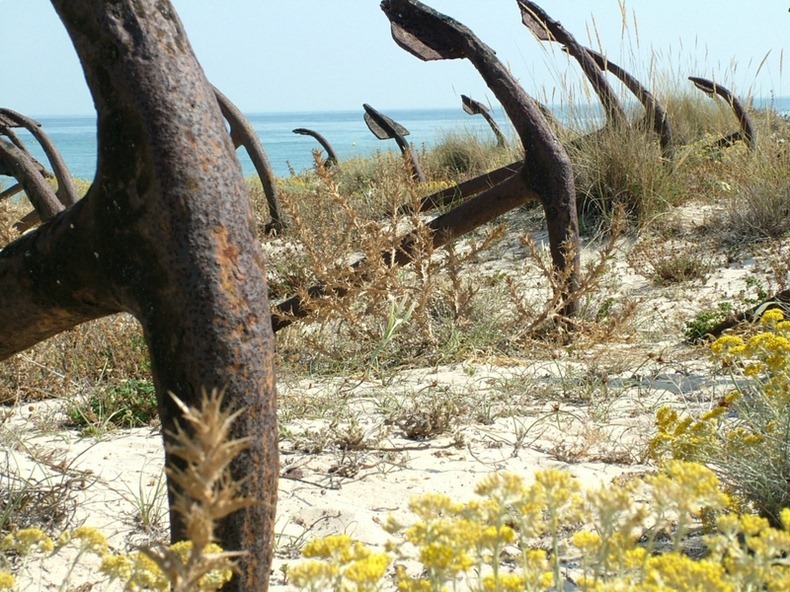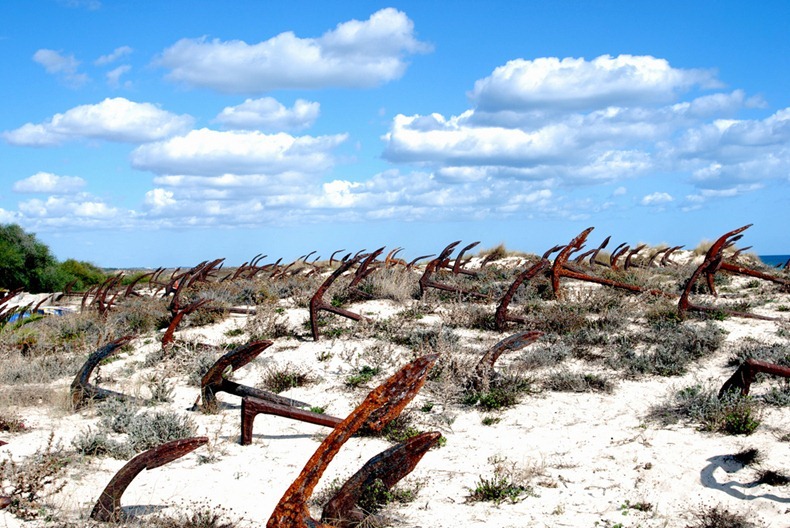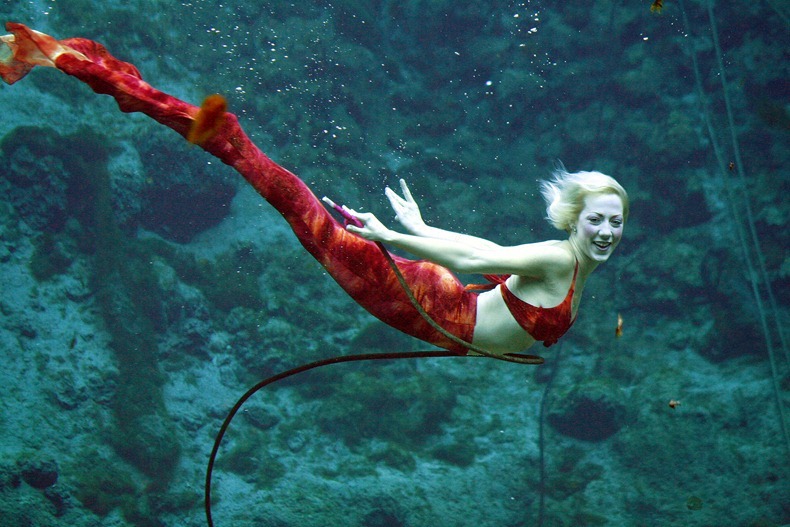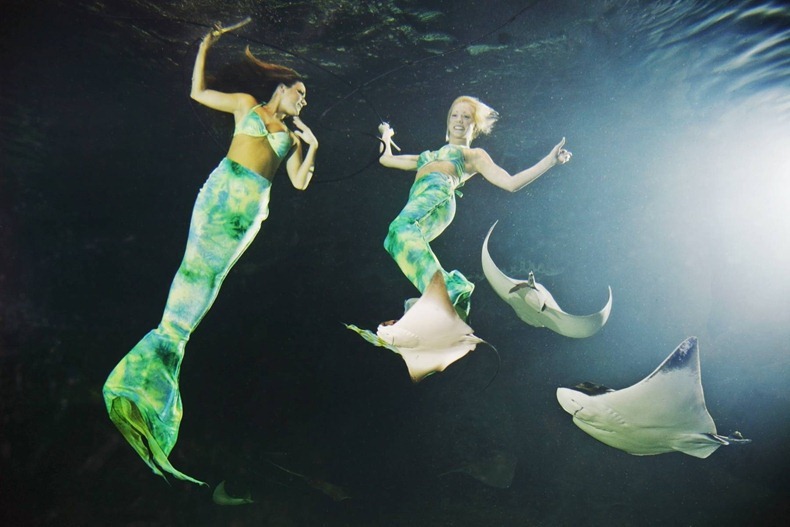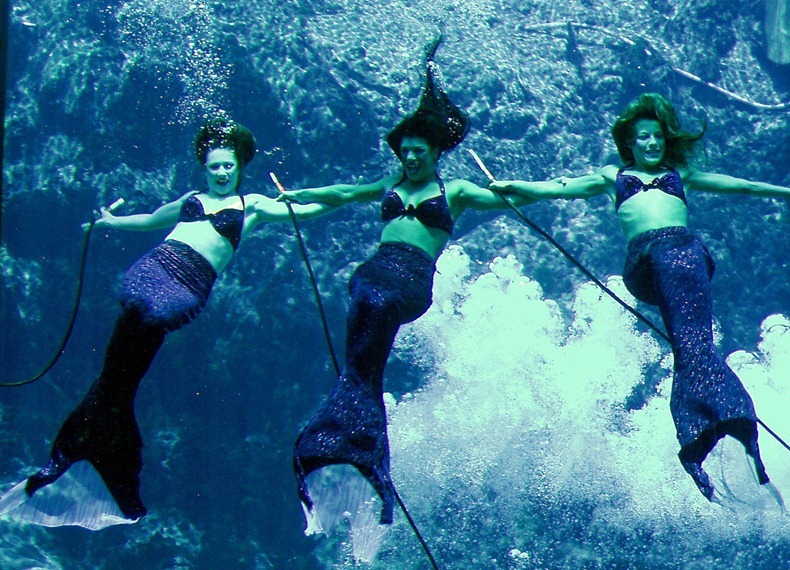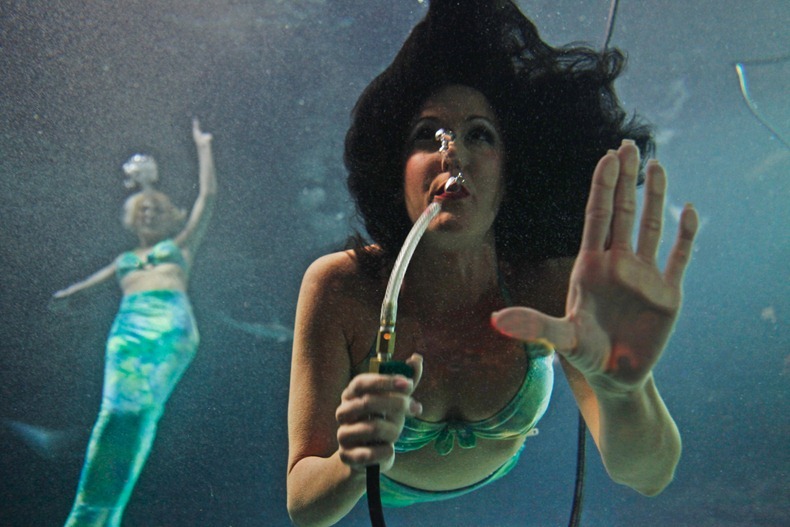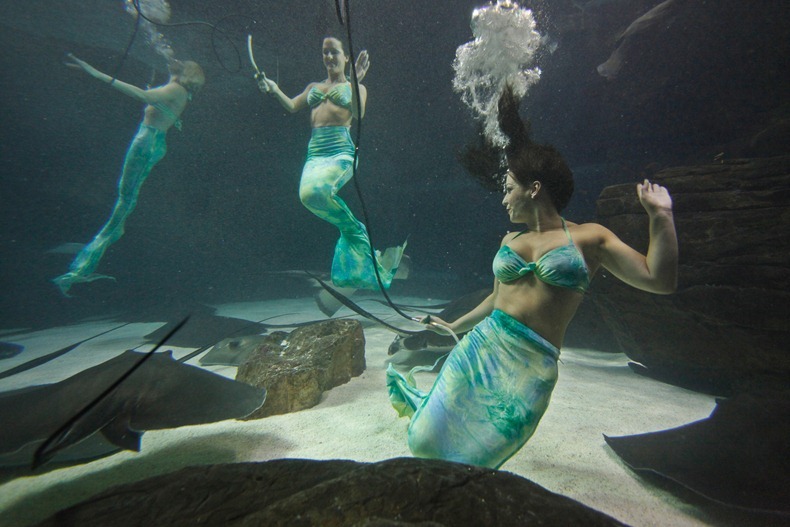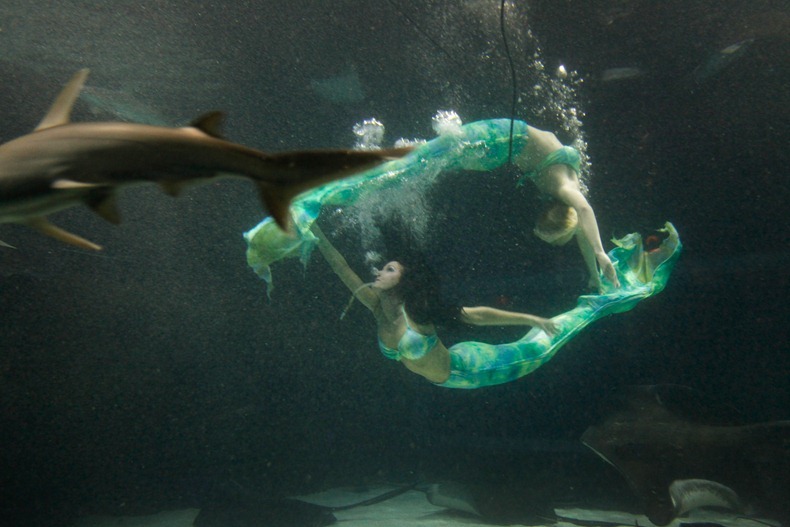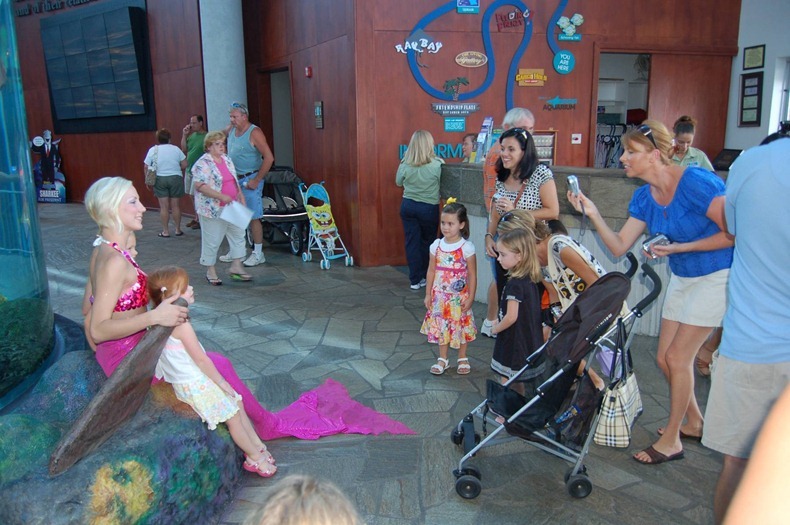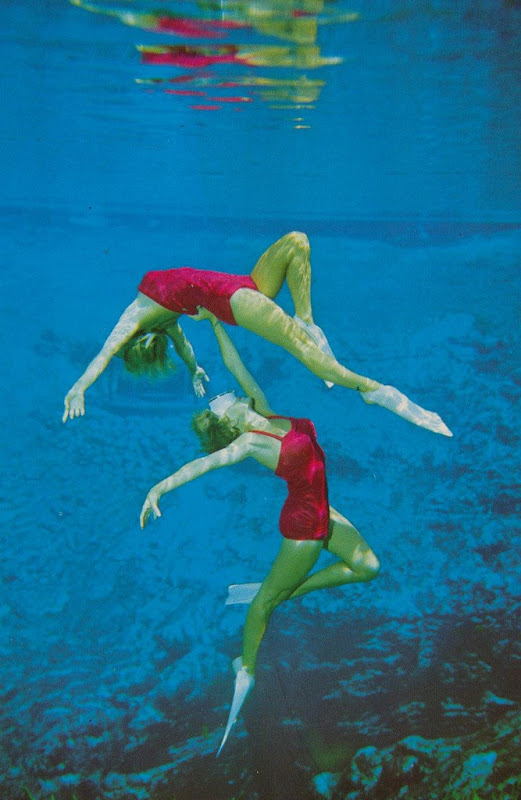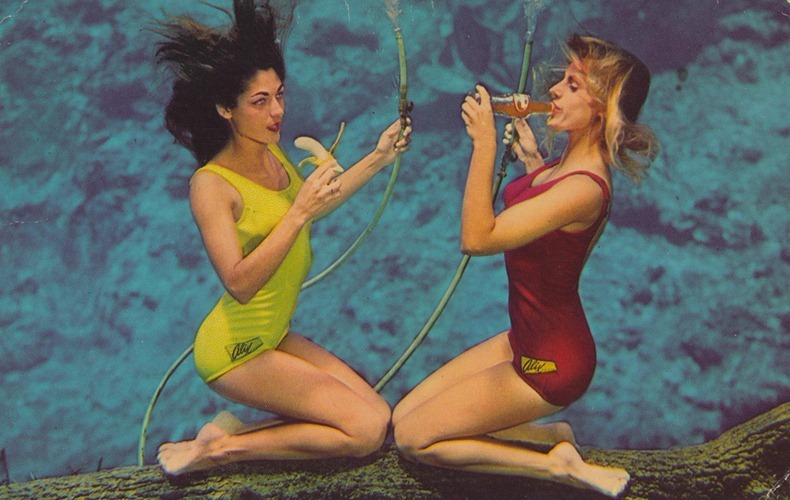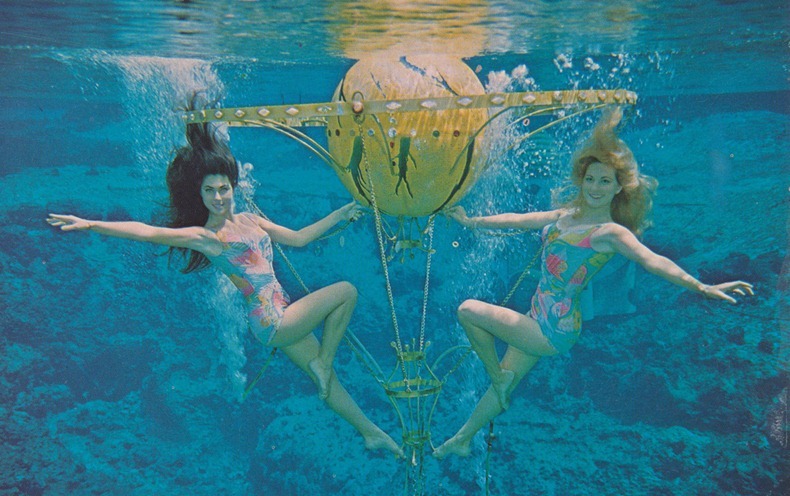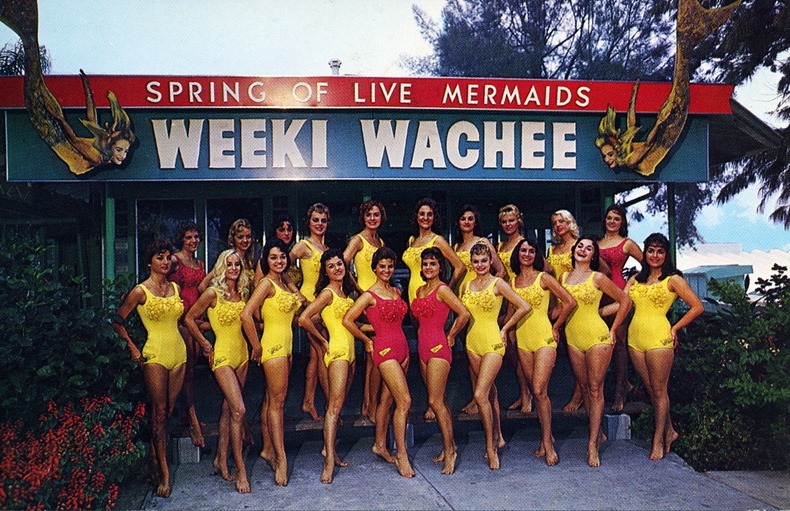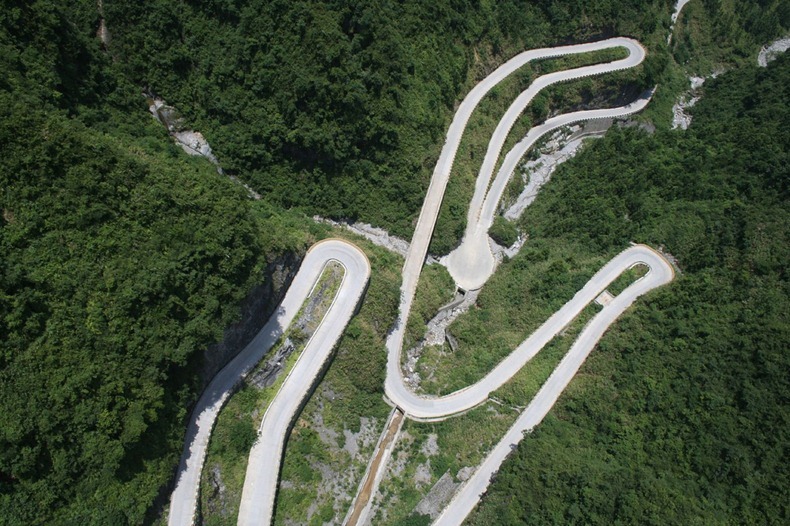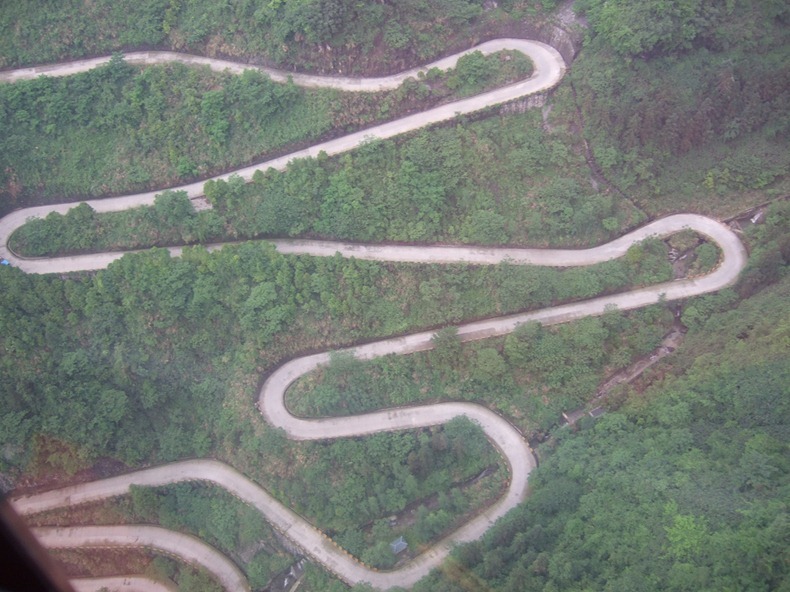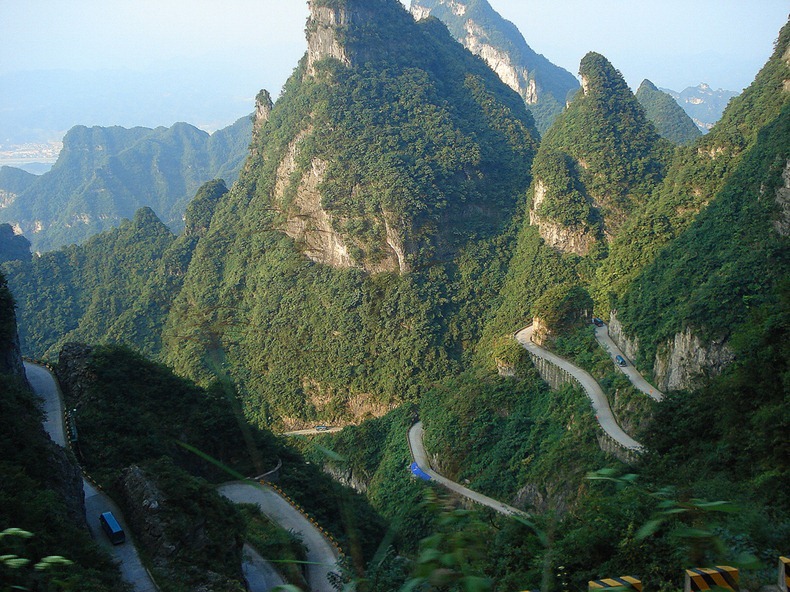Weeki Wachee Springs is one of Florida’s oldest and most unique
roadside attractions. It’s located about an hour north of Tampa at the
crossroads of U.S. 19 and State Road 50. For nearly 60 years, this
430-acre theme park has attracted visitors who come to watch beautiful
women dressed as mermaids with fins about their legs swim in the cool,
clear spring waters.
Each day, more than 170 million gallons of
clear, fresh 72-degree water bubbles up out of the subterranean caverns
at Weeki Wachee. The basin of the spring is 100 feet wide with limestone
sides, and it is there, where the mermaids swim, some 16 to 20 feet
below the surface. The current runs a strong five miles per hour, so
it’s quite a feat for the mermaids to stay in one place in such a
current. Besides the Mermaid Shows, there were beautiful gardens, jungle
cruises and a beach. Peacocks roam the beautiful grounds at Weeki
Wachee Springs, and visitors can pose with the mermaids, take a
riverboat ride down the Weeki Wachee River, or even go swimming in the
springs.
Photo credit Weeki Wachee Springs State Park
The
attraction was created in 1947 by an ex-Navy frogman named Newton
Perry, who based the show on underwater air hose breathing techniques
which he experimented at Weeki Wachee. He built an 18-seat theatre into
the limestone at the edge of a spring and recruited pretty young girls
to swim underwater. He taught them to smile and breathe with his new air
hose — while underwater. Without masks, mermaids learn to take gulps of
air from the hose, balancing the pressure on their ears and sinuses
while being buffeted by a 12-mile-an-hour (19-kilometer-an-hour)
current. They also learned to drink beverages and eat underwater.
There
was no marketing at the time and traffic was sparse, so when the girls
heard a car coming, they would run outside in their bathing suits and
lure travelers inside for a performance. As the performances became more
sophisticated, Weeki Wachee's fame grew and so did the crowds. By the
1950s, Weeki Wachee was one of the nation's most popular tourist stops.
At its height, during the 1960s, the mermaids performed ten shows a day.
During its heydays, Weeki Wachee Springs attracted celebrities
including Elvis Presley, Arthur Godfrey, and Kevin Smith. But then
novelty wore off, and it no longer attracted headlines, investors, or
crowds. Many people at Weeki Wachee werr worried that the park will soon
shut down, a victim of changing times and local politics.
Fortunately,
the government converted Weeki Wachee Springs to a Florida State Park
in 2008. The state plans to preserve and continue to stage the mermaid
show for the public, with a permanent staff of around 15 mermaids and
five mermen.
Photo credit Ripley's Believe It Or Not!
Photo credit Ripley's Believe It Or Not!
Photo credit Ripley's Believe It Or Not!
Photo credit Ripley's Believe It Or Not!
Photo credit Ripley's Believe It Or Not!
Photo credit Ripley's Believe It Or Not!
Photo credit Ripley's Believe It Or Not!
Two
lovely Mermaids from the new 1968 underwater show at Weeki Wachee,
Florida pose with one of the elaborate props built especially for the
aquatic productions staged in the depths of the Underwater Grand Canyon
at Weeki Wachee.
Florida's
Spring of Live Mermaids has assembled a cast of 20 lovely mermaids for
the new underwater musical revue. Postmarked 1963.

